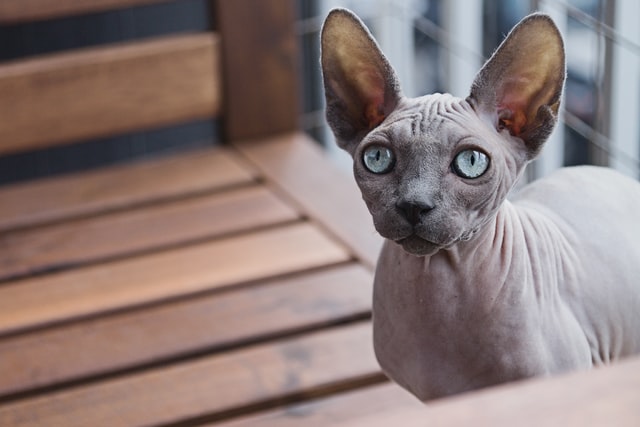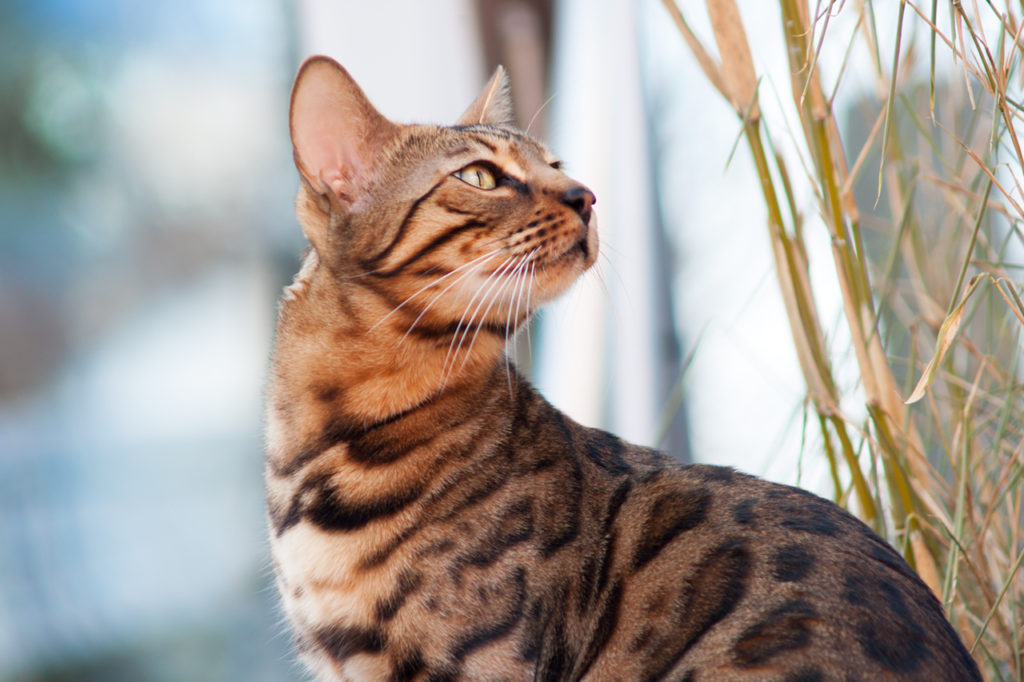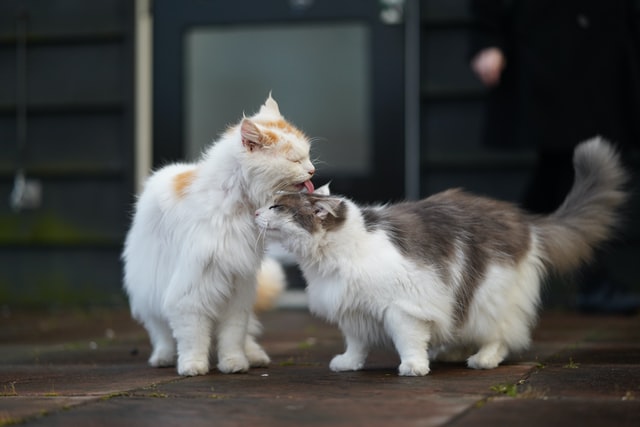There are misconceptions, misunderstandings and mistakes surrounding the question “are Bengal cats hypoallergenic?” and whether they cause allergic reactions in humans.
This post explores 5 big myths surrounding cat allergies which is a deal breaking subject for many potential Bengal cat owners.
What I eventually found whilst researching this subject may well surprise you as it surprised me.
In this article you will discover:
- What the term ‘hypoallergic’ means
- Whether Bengal cats really are hypoallergenic
- Action you can take at home to help reduce allergy symptoms
Firstly then, let’s look at what hypoallergenic actually means…
Myth #1: If something is hypoallergenic it does not cause allergies
Myths can arise from simple misunderstandings, and in the case of whether Bengal cats are hypoallergenic, part of this stems from not actually knowing what the term ‘hypoallergenic’ means.
So clearing this up seems a good place to start.

Just reading forum posts and comments on various cat or allergy related sites will show you people simply don’t understand the terminology used.
It’s easy then to stake claims, or to rubbish notions if the meaning is lost.
As the dictionary defines, hypoallergenic means that the object in question is LESS LIKELY to cause an allergic reaction.
So it’s still possible, but just less likely.
What about Bengal cats specifically then?
Myth #2: Bengal cats do not cause allergies
In the United States there were (as of 2011) 86.4 million household cats.
17% of people who have or live with a cat show a level of sensitivity or intolerance to allergens produced by their animal(s).
That’s a lot of cat owners and a lot of allergies to those cats.
In order to understand why this is a myth, there’s a need to understand why people are allergic to cats.
The culprit in up to 90% of cases is a protein called Fel d 1.
This is found in the saliva and produced by sebaceous glands in the skin along with the cat’s perianal glands.
As the cat licks and grooms itself, it spreads this allergy-causing protein (allergen) around its coat.
From here it’s transferred directly to humans, is spread via an aerosol or when cats shed fur and dander.
High concentrations of the allergen are found where cat hair/dander gets trapped- mainly carpets, bedding and upholstered furniture.
Bengal cats produce this allergen (and others) and do shed their fur therefore clearly, they can, and do, also cause cat allergies.
But will a Bengal cat cause less of a reaction than individuals from other cat breeds? That is, are Bengal cats hypoallergenic?
Myth #3: Bengal cats are hypoallergenic
As we’ve established, hypoallergenic means something is less likely to cause an allergic response.
We’ve also concluded that due to the nature of how people become allergic to cats, Bengals are no different as they produce the same allergen causing proteins.
But a myth has sprung that Bengal cats are hypoallergenic and this is rooted in their physical make-up and behaviour.
Due to the nature of their fur, Bengals shed less and are also said to clean and groom their coats less frequently than other breeds.
Their affinity for water theoretically removes more allergen from their bodies also.
With less licking, grooming and shedding, there is potentially less allergen in the environment so less chance of developing a (strong) allergic reaction.
However, this is only in theory as there is no scientific evidence to back this up, with anecdotal evidence suggesting some cat allergy suffers do react less to Bengals, whereas others claim they react more strongly.

So are Bengal cats hypoallergenic?
There is no definitive answer. They seem to be for some people, but not others.
But as we’ll see, the idea of a hypoallergenic cat is in fact itself a myth…
Myth #4: Hypoallergenic cats exist
This is where things perhaps become less clear, or even controversial, unless you stick to the evidence…
Clearly a cat that does not cause an allergic reaction, or indeed, a reduced one, would be very marketable with such high numbers of cat allergy sufferers.
Those breeds that supposedly naturally produce less Fel d 1 (and other allergens), shed less fur or indeed, have no fur at all have been labelled ‘hypoallergenic cats’.
And this will be true to a point.
Individuals may have more of a reaction to a particular breed of cat than they do to another.
There’s a good chance then that this individual is likely to believe the breed is at the very least, hypoallergenic.
Scouring online forums and comments on articles like this, will demonstrate these beliefs.
But this is the BIG myth.
No breed of cat can be defined cat as hypoallergenic. They don’t exist.
According to science research, certainly the reviewed papers I read when researching this topic, as all cats produce allergens, all cats have the potential to cause an allergy.
Any difference in reaction is down to the individual, and there simply isn’t the data to justify saying a particular breed is better for allergy sufferers than another.
The concept of a “hypoallergenic”animal is not supported by scientific evidence; therefore, the implementation of more established practices in preventing pet dan-der allergy must be considered.
Butt et al, 2011
But just because you are allergic to your cat, it doesn’t necessarily mean you shouldn’t keep one…
Myth #5: If I’m allergic to my Bengal, I have to get rid of it
So you have a Bengal and are allergic to it.
That’s annoying.
Many would say “rehome it.”
And they may be right, as this would be the only way to successfully eliminate the allergen (and scientific evidence proves this).
But I’m sure you’ve already realised that.
If however, you really don’t want to, then there are things you can try that may help reduce your symptoms.

- Keep your cat in an outdoor enclosure.
- Thoroughly clean your home, especially areas where hair and dander may build.
- Remove carpeting, replace upholstered furniture or cover with impermeable coverings.
- Reduce contact time with your Bengal and the items it uses.
- Feed it a high quality diet to maintain health.
- Use a HEPA air filtration system.
Of course the effectiveness of these methods depends on how strong your reaction is, how much you’re prepared to tolerate and the effort you’re prepared to put in.
It also relies on non-allergic members of your household being prepared to consistently empty and clean the litter box on your behalf.
No, you shouldn’t fake an allergic reaction just to get them to do that…
Are hairless cats hypoallergenic?
Put simply, no, they are not either.
This may seem counterintuitive.
If cat fur is one of the main means of spreading the allergy causing agent, surely a cat with no fur is less likely to be problematic.
This would be true in theory, but a true hypoallergenic cat, that is a cat breed, Bengal or otherwise, has not been shown (scientifically) to exist.
Even so called ‘hairless cats’ like the Sphynx (below) are rarely totally hairless and can still be covered in some fine, sparse, fur.

And they still produce potential allergens in their saliva and from various glands of course.
Cleaning your home might be a bit easier though…
Can you develop immunity to cat allergens?
Theoretically it’s possible as this can happen with other allergy causing agents.
Some websites suggest there are people who have developed immunity, or ‘grow out of it.’
But there is no guarantee this will happen.
Immunotherapy is also a viable option but again, there are no guarantees of success.
Summary
The myths associated with cats and allergies stem from a misunderstanding of terminology and anecdotal evidence from individuals.
With regards to the question, “Are Bengal cats Hypoallergenic?” despite what you may read elsewhere, Bengal cats are NOT hypoallergenic.
No cat breed is.
And this is scientifically proven.
Only on an individual basis can an allergy sufferer determine the level of reaction they get from a cat.
For known allergy sufferers especially, it would be a good idea to visit the Bengal you’re interested in to see how you’re affected.
Even if you are, it may still be possible to keep one, but you’ll really have to consider if it’s worth spending money, time and energy on reducing exposure to the allergen, getting treatment and whether you and your Bengal will get the same level of enjoyment and quality of life.
Resources
Keep the cat, change the care pathway: A transformational approach to managing Fel d 1, the major cat allergen. Satyaraj et al (2019)
Consensus document on dog and cat allergy. Dávila et al (2018)
Do hypoallergenic cats and dogs exist? Butt et al (2011)
Immunotherapy for Cat Allergies: A Potential Strategy to Scratch Back. Clark et al (2017)
Further Reading:




